
Filter News
Area of Research
- (-) Biology and Environment (47)
- (-) Energy Science (74)
- (-) National Security (12)
- (-) Nuclear Science and Technology (18)
- (-) Supercomputing (59)
- Advanced Manufacturing (2)
- Biology and Soft Matter (1)
- Computational Engineering (1)
- Computer Science (5)
- Electricity and Smart Grid (3)
- Energy Frontier Research Centers (1)
- Functional Materials for Energy (1)
- Fusion and Fission (10)
- Fusion Energy (7)
- Isotope Development and Production (1)
- Isotopes (5)
- Materials (84)
- Materials for Computing (10)
- Mathematics (1)
- Neutron Science (27)
- Nuclear Systems Modeling, Simulation and Validation (1)
- Quantum information Science (9)
- Sensors and Controls (1)
News Topics
- (-) Advanced Reactors (17)
- (-) Grid (46)
- (-) Nanotechnology (18)
- (-) Physics (12)
- (-) Quantum Science (27)
- (-) Space Exploration (10)
- 3-D Printing/Advanced Manufacturing (86)
- Artificial Intelligence (53)
- Big Data (37)
- Bioenergy (67)
- Biology (83)
- Biomedical (34)
- Biotechnology (18)
- Buildings (39)
- Chemical Sciences (21)
- Clean Water (19)
- Composites (19)
- Computer Science (125)
- Coronavirus (33)
- Critical Materials (12)
- Cybersecurity (28)
- Energy Storage (75)
- Environment (148)
- Exascale Computing (29)
- Fossil Energy (2)
- Frontier (32)
- Fusion (12)
- High-Performance Computing (59)
- Hydropower (10)
- Isotopes (8)
- Machine Learning (32)
- Materials (50)
- Materials Science (47)
- Mathematics (7)
- Mercury (10)
- Microelectronics (1)
- Microscopy (20)
- Molten Salt (5)
- National Security (38)
- Neutron Science (27)
- Nuclear Energy (46)
- Partnerships (17)
- Polymers (14)
- Quantum Computing (20)
- Security (18)
- Simulation (28)
- Software (1)
- Statistics (1)
- Summit (48)
- Transportation (73)
Media Contacts

A trio of new and improved cosmological simulation codes was unveiled in a series of presentations at the annual April Meeting of the American Physical Society in Minneapolis.

Climate change often comes down to how it affects water, whether it’s for drinking, electricity generation, or how flooding affects people and infrastructure. To better understand these impacts, ORNL water resources engineer Sudershan Gangrade is integrating knowledge ranging from large-scale climate projections to local meteorology and hydrology and using high-performance computing to create a holistic view of the future.

A study led by Oak Ridge National Laboratory researchers identifies a new potential application in quantum computing that could be part of the next computational revolution.
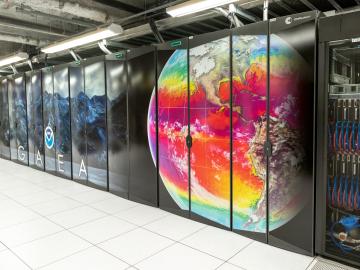
Oak Ridge National Laboratory, in partnership with the National Oceanic and Atmospheric Administration, is launching a new supercomputer dedicated to climate science research. The new system is the fifth supercomputer to be installed and run by the National Climate-Computing Research Center at ORNL.
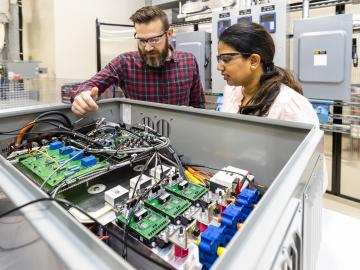
Researchers at ORNL are helping modernize power management and enhance reliability in an increasingly complex electric grid.

A new report published by ORNL assessed how advanced manufacturing and materials, such as 3D printing and novel component coatings, could offer solutions to modernize the existing fleet and design new approaches to hydropower.

The Center for Bioenergy Innovation has been renewed by the Department of Energy as one of four bioenergy research centers across the nation to advance robust, economical production of plant-based fuels and chemicals.
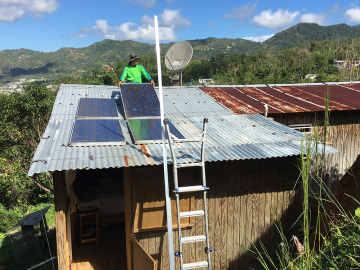
ORNL researchers Ben Ollis and Max Ferrari will be in Adjuntas to join the March 18 festivities but also to hammer out more technical details of their contribution to the project: making the microgrids even more reliable.
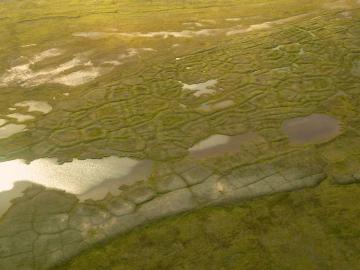
Oak Ridge National Laboratory scientists set out to address one of the biggest uncertainties about how carbon-rich permafrost will respond to gradual sinking of the land surface as temperatures rise.
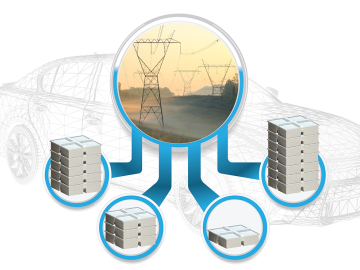
When aging vehicle batteries lack the juice to power your car anymore, they may still hold energy. Yet it’s tough to find new uses for lithium-ion batteries with different makers, ages and sizes. A solution is urgently needed because battery recycling options are scarce.


